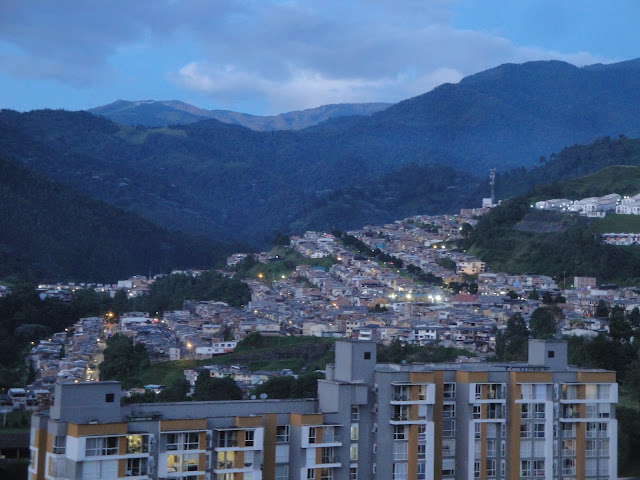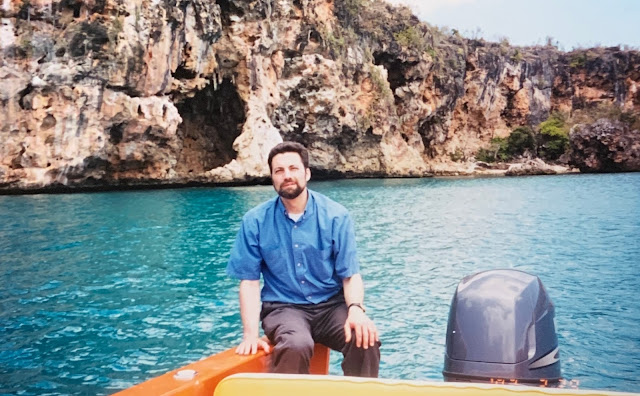 |
| View of the Magdalena River valley from La Piedra Capira, near Guaduas |
This is a quick list of attractions accessible in the vicinity of Bogotá, Colombia's capital.
La Candelaria, the traditional center of Bogotá, is an interesting place with museums, coffee shops, bookstores and other attractions. For some reason I like hearing people doing English tutoring in the coffee shops or having discussions about politics. Take reasonable precautions but don’t be paranoid.
From my first trip to Colombia in 1980, I had seen buses to Valle de Tenza but had not gone there until 2015. It’s a few hours from Bogotá and has spectacular scenery and picturesque towns. I immediately connected with people every time I would arrive in the town.
Suesca, another town outside of Bogotá, is known for rock climbing. While on the bus, I observed a tourist with a large backpack asking for directions. I didn’t go to climb rocks but wanted to see the town. Again, I had some very nice encounters with people there.
La Piedra Capira, outside of the town of Guaduas, is one of the best-kept secrets of Colombia travel, in my opinion. It’s a fenced overhanging rock that on a clear day boasts an incredible view of the Magdalena River valley, including snow-capped peaks in the Cordillera Central. Talk to several taxi drivers in Guaduas to see who gives you the best price. Go in the morning as the afternoon sun obscures some of the view. (Note: Guaduas itself is a nice destination. It has a design similar to Villa de Leyva, but does not have the influx of foreign tourists that Villa de Leyva has. It was also the home of the Colombian patriot Policarpa Salavarrieta (aka La Pola).)



































